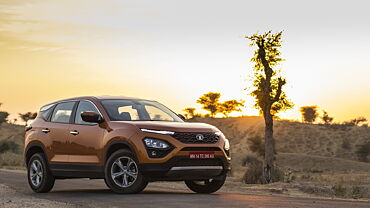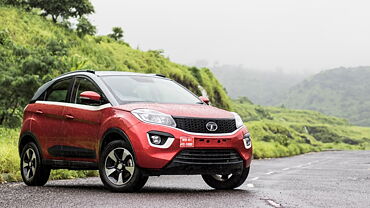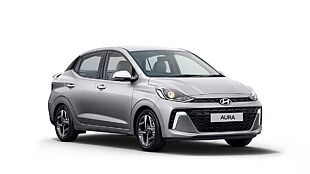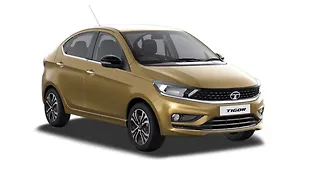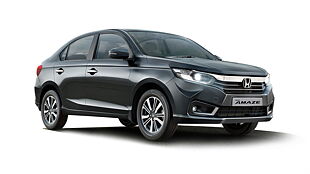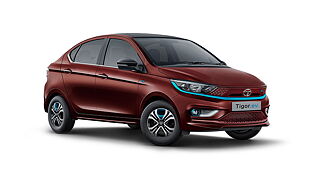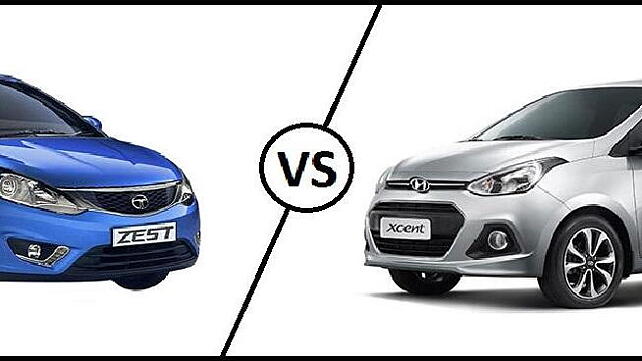
It’s the battle of the compact sedans and this time we have decided to pit the Hyundai Xcent against the soon to be launched Tata Zest. The former was launched for the Indian market on March 12 and has been priced starting from Rs 4.66 lakh while the latter was unveiled on February 3 at a function in Delhi and is one of the new generation offerings from the Mumbai-based automaker. Both have been launched to give their parent companies a chance to up the game and get market share in the CS segment.
Exterior
The Hyundai Xcent is much like its hatchback sibling when it comes to appearance. The front is exactly the same as the Grandi10 which means that it gets the two piece chrome grille complete with the Hyundai logo and large and rather plastic-looking air intake that includes a number plate holder. It also gets triangular fog lamp holders with round fog lamps. The Zest on the other hand is based on the Bolt hatchback but looks like a product that has been developed to be a compact sedan. It gets the same fascia as the hatchback and this includes the large chrome-laced grille, swept back headlights, triangular fog lamps and double slat air intake.
The Hyundai’s appearance from the front will play to those who want a funky yet assured face while the Zest is expected to do the same but has that one added bit that will appeal to the Bappi Lahri in all of us-‘the bling factor’. It has become a common addition to all its vehicles and will help it acquire a premium appeal in other markets too.
On the sides, both cars while looking completely different have very similar design elements. This includes the flowing C-pillar (larger in the Zest), aerodynamic creases as well as the flared wheel arches. However, in this region, the Xcent has one more design element which is black coloured body moulding and this seems to give it a more bulky appearance than the Zest.
It is almost a similar story at the rear of both cars. The design elements are almost the same on both vehicles and this includes the wrap around tail lamps, chrome strip above the number plate holder, stubby boot lid and even the position of the badges. However, the shape of the bumper is slightly different thanks to the creases in different places. The Xcent gets dual reflectors on the top of the bumper while the Zest gets a single unit in the middle of the lower section.
Interiors
The Grand i10 is one of the most well equipped cars in the hatchback segment and all the creature comforts have been carried forward in the Xcent. The sedan comes with a number of segment-first features like rear AC vents, a 1GB hard drive for the 2-DIN music system, push-button start, all-electric rear view mirrors, steering-mounted audio and Bluetooth controls and a cooled glove-box.
Safety features include standard dual front airbags in the SX variant and optional ABS in S and SX. The top-end variant will also get reverse parking camera, another segment-first. Base variant will get power windows only in the front. Design and quality wise, the cabin lends a premium look to the sedan and feels fresher than its competition.
The Zest on the other hand gets a more plain but equally modern two-tone interiors. Standard features on the car that has been displayed and on the official website appear to be a 2-din infotainment system, climate control, steering mounted audio controls, chrome outlines and accents for the instrumentation and accessories. We expect that they will fit a rear AC vent, at least 2 airbags, ABS with EBD and maybe even a cooled glove box. On the lower spec variants, we expect that Tata will offer beige fabric interiors, AC and a 1-DIN unit that it currently retails on most of its cars. Like the exteriors, the bling factor is high in the Zest but the feature list appears to much higher in the Xcent and so we expect that both cars are likely to appeal to different sets of buyers.
Engines
The Tata Zest will be powered by two sets of engines- a 1.2-litre turbocharged petrol mill that produces 84bhp and 140Nm of torque as well as the 1.3-litre Multijet diesel that produces 90bhp and 200Nm of torque. The former is from a new family of engines called Revtron that will underpin a new generation of Tata cars and will be in the range of 1.0-litre to 1.5-litres. Power is transmitted to the front wheels via a five-speed manual in both cars but we expect that Tata will soon offer an AMT unit which should make its way to this car.
The Xcent on the other hand is also powered by two sets of engines - The 1.2-litre Kappa2 petrol unit that produces 82bhp and 113.7Nm of torque while the diesel is a 1.1-litre three-cylinder unit that produces 71bhp and 180.4Nm of torque. Both engines get a five-speed manual as standard with the petrol also getting the option of a four-speed automatic. The elephant in the room however, is that Hyundai may launch a diesel Automatic Transmission version of the Grand i10 and Xcent but we don’t know when and at what price this special variant will be offered at. This will be a game changer in the segment if and when it is launched.
Price and competition
The Hyundai Xcent starts from Rs 4.66 lakh and goes all the way up to Rs 7.38 lakh for the top- spec SX (o) diesel variant. We expect that Tata will undercut its rivals and will price the Zest in the range of Rs 4.5 lakh to Rs 7.2 lakh for the top- spec diesel engined variant. Both the cars compete in the B-Segment with the Honda Amaze, Maruti Suzuki Dzire and the soon to be launched Figo Sedan.
Know the variants, features and price of the Hyundai Xcent

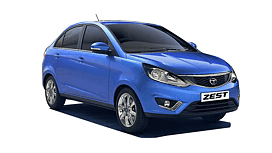
![Hyundai Xcent [2014-2017] Image Hyundai Xcent [2014-2017] Image](https://imgd.aeplcdn.com/272x153/cw/ec/12657/Hyundai-Xcent-Right-Front-Three-Quarter-94095.jpg?wm=0&q=80)
